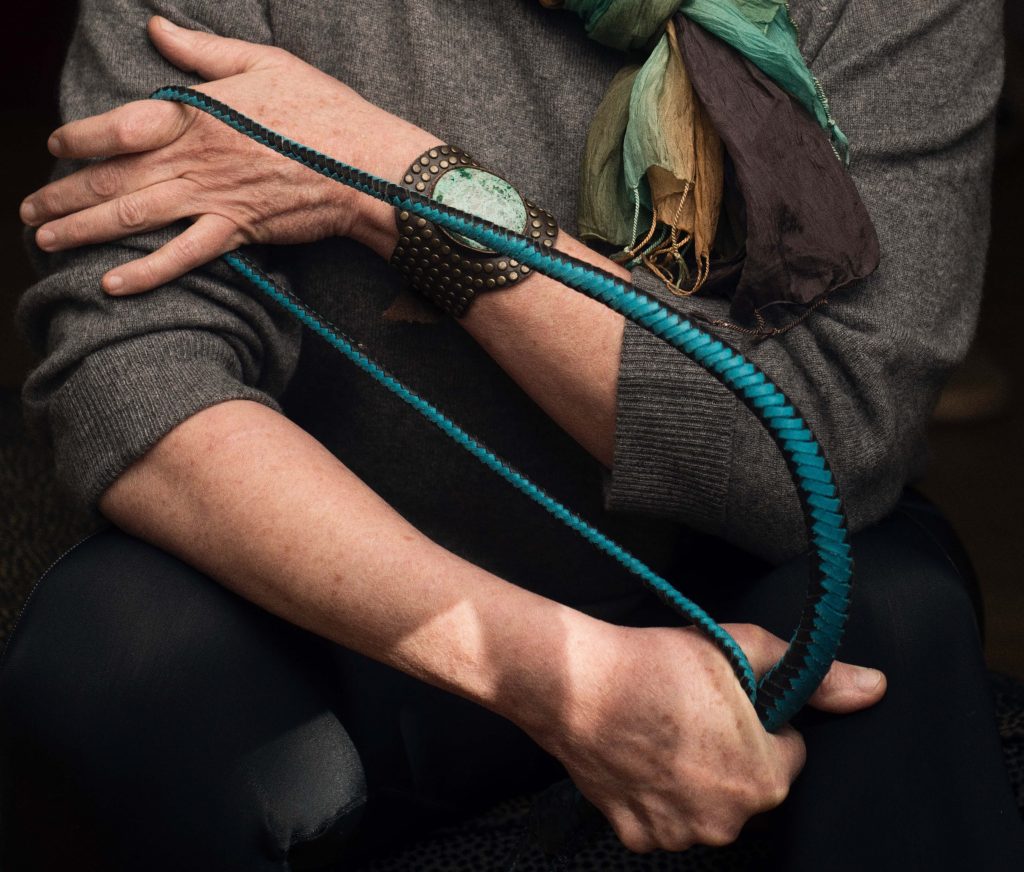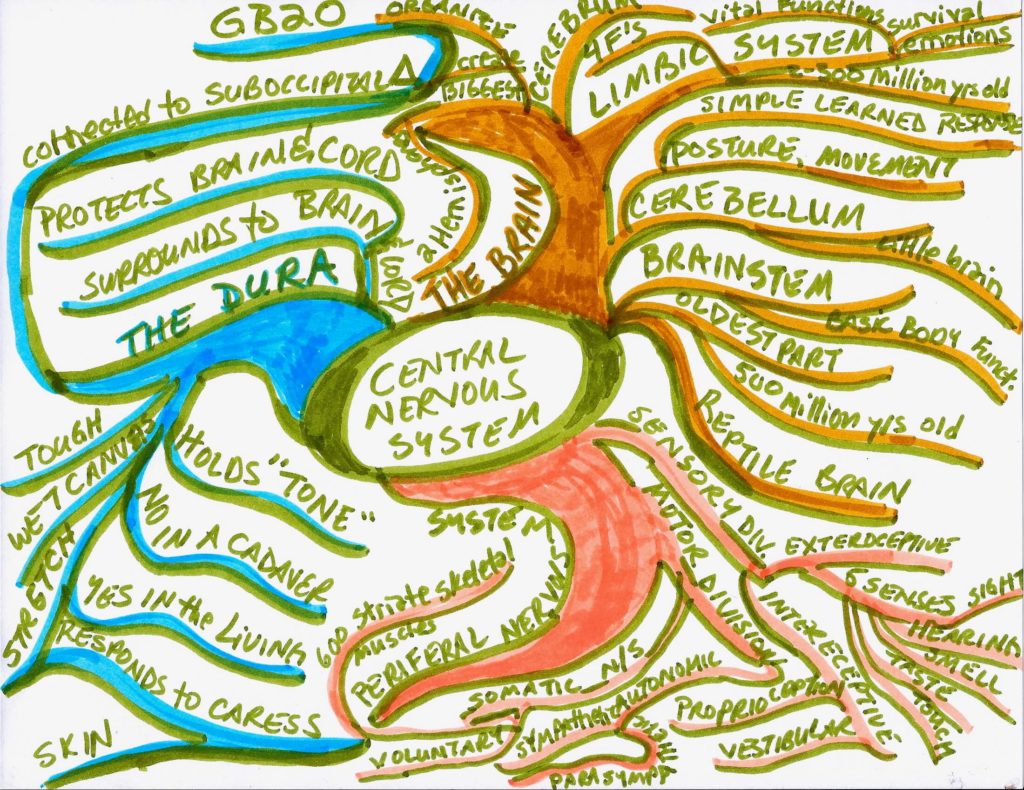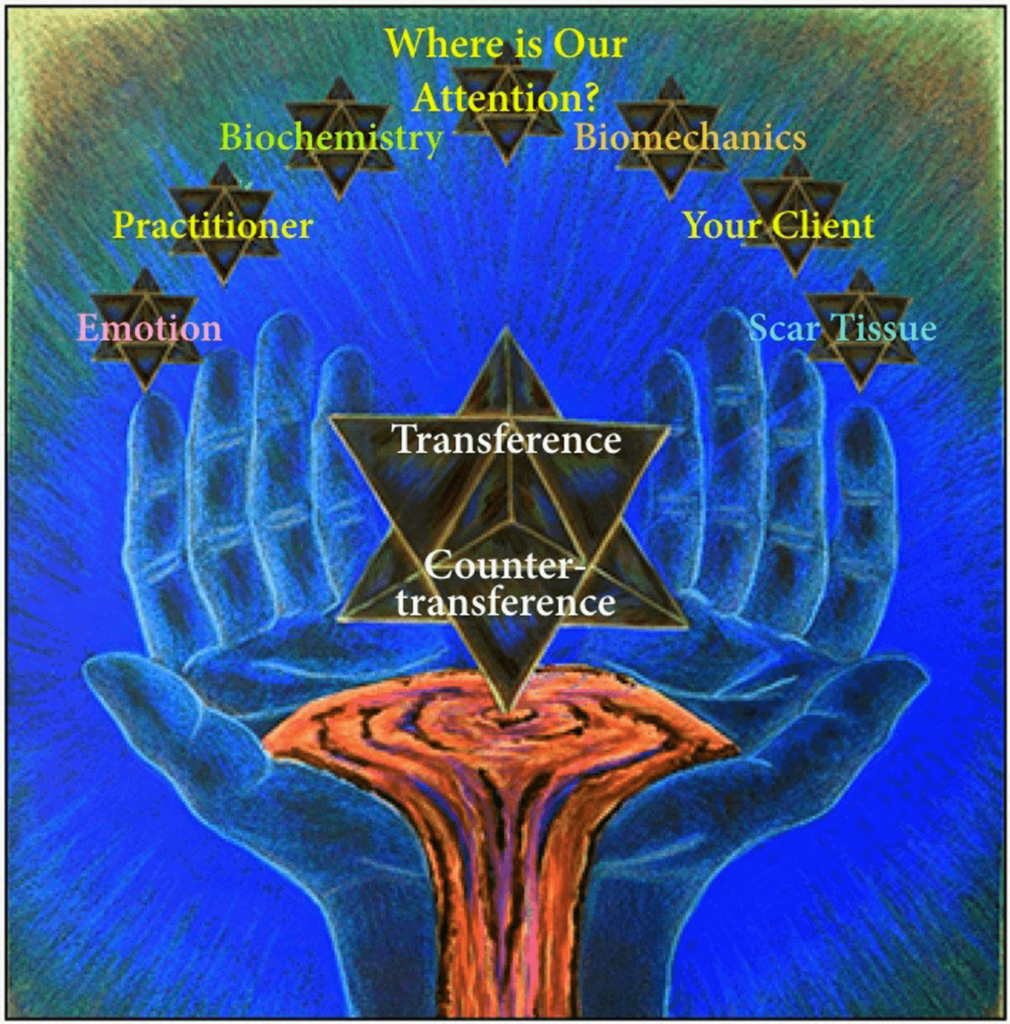Breath allows us to SEE how which branch of our nervous system dominates our experience, for better or worse. When things swing out of balance, the use of breath can offer sensations to make a correction. How did we accumulate this much stress anyway? Present circumstances aside, as a culture, we do everything to train young people to quiet their bodies and suppress their boisterousness, along with their breath. We're told to sit still in school. Not to wiggle, not to squirm. To suppress our urges to pee, ignore our need for a snack, and not scratch that itch. As a consequence, we've learned to ignore our bodies. Including our breath.
Tag Archives: embodiment
Brentwood Housewife in Her 50s perks up and asks me what exactly it is I do. I tell her I do lots of things: Bodywork, pelvic floor work, scar tissue remediation, craniosacral work. She nods, glazing over. My Gyro instructor reminds her with some slight exasperation that she’s given her my name more than once. I discreetly wink at my instructor and seize the moment. I jump in - “And I’m also an Orgasm Mistress…”
The surprising truth is that without proper preparation, bodywork is simply not right for everyone right away. There’s often quite a bit of body-based housekeeping to take care of before bodywork becomes an appropriate vehicle to take us where we want to go. Each person has their own particular chores to complete to improve their personal balance of four variables; this is their health equation to solve before bodywork is a viable tool to fulfill any promise of pain relief or personal potentiation.
Accurate proprioception (knowing where you are in space) is a use-it-or-lose-it proposition. Due to scar tissue and inflammatory factors, essential functions of pelvic floor organs and genital tissues can be affected. Scar tissue causes thickening of the extracellular matrix or ECM (the goop between your cells), which reduces blood flow, neural messaging, and sensory integration, eventually interfering with your pelvic proprioceptive literacy. This is a kind of dissociation, an inability to feel parts of your body. The mental representation of pelvic floor muscles, encoded in the sensory motor cortex of the brain, goes dark.
In my professional practice as a health consultant, scar tissue remediator, bodyworker, and teacher, I am increasingly aware of the way transference and countertransference play out across a psychological spectrum. This is an effort to identify that spectrum, so we, as somatic professionals, can successfully offer more dynamic and productive sessions. A picture is worth a thousand words. The image above has meaning to me because many of us have our attention out - in our hands - when we work with clients. Where do we hold our internal awareness?





